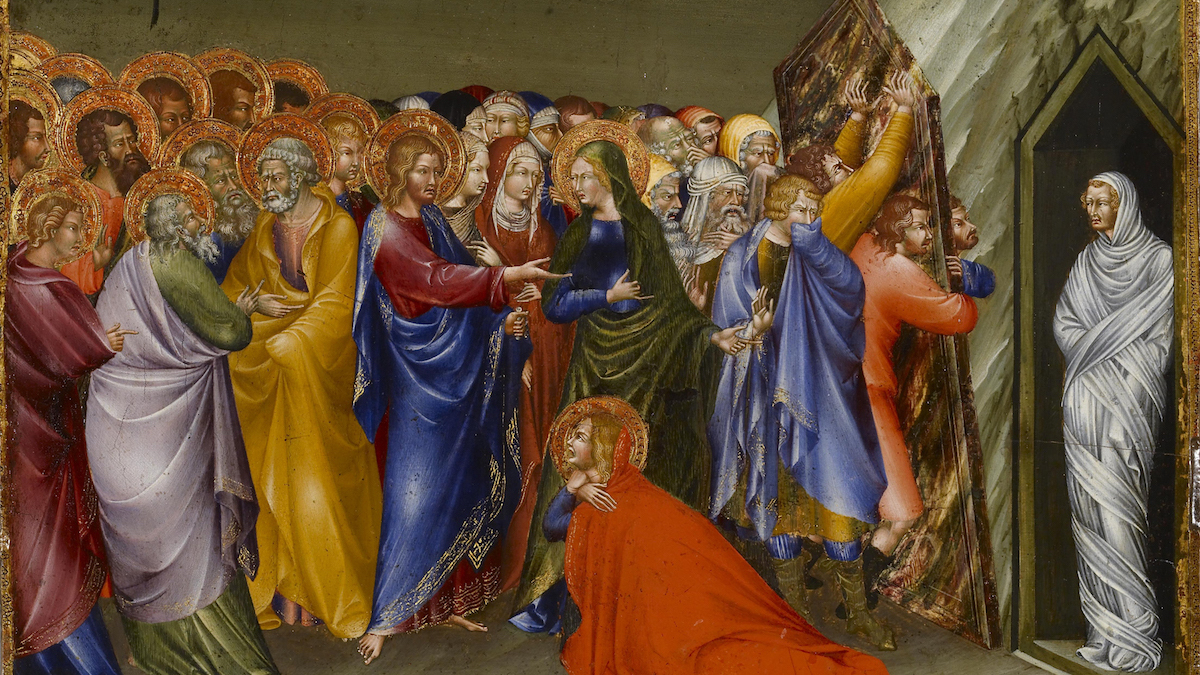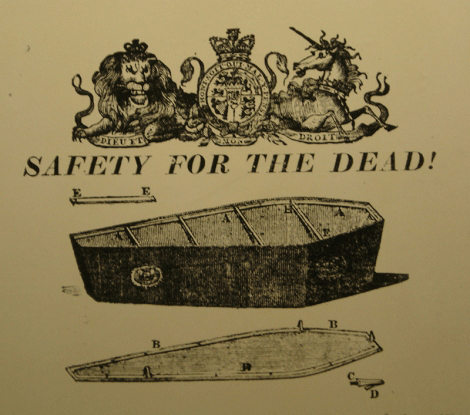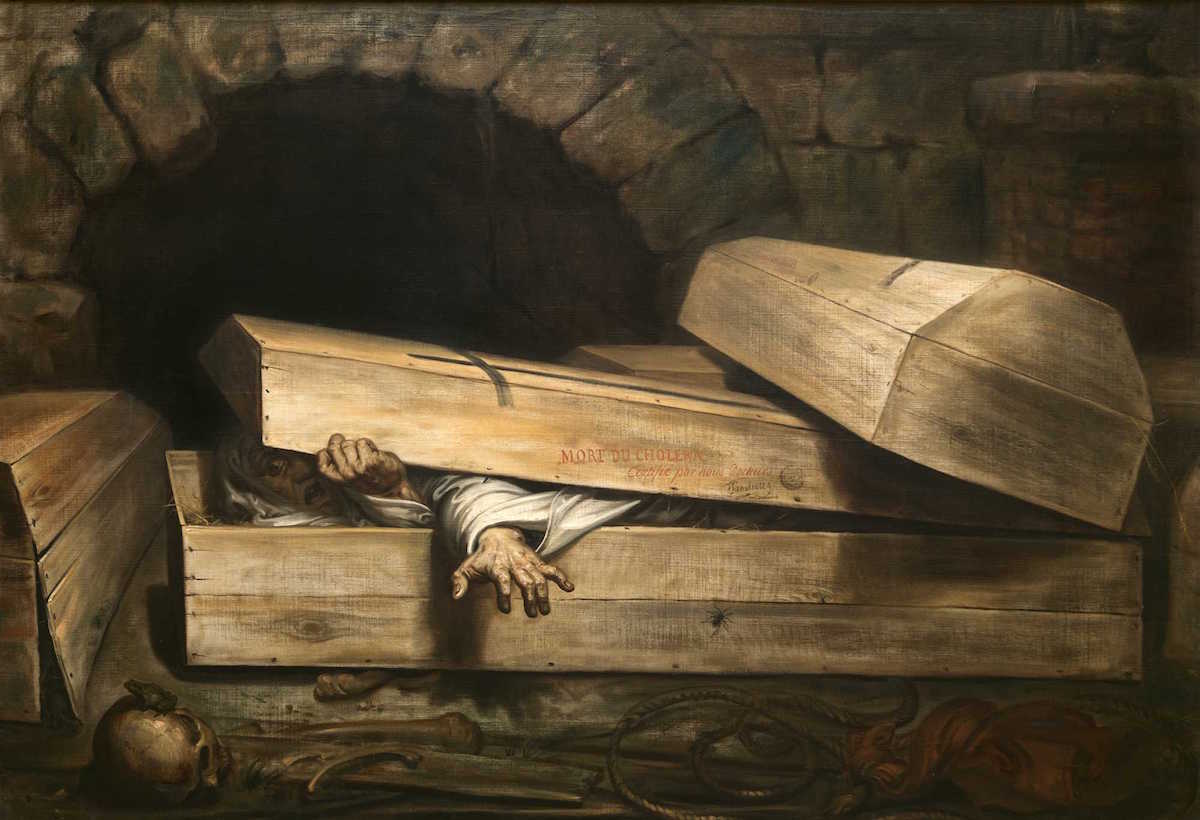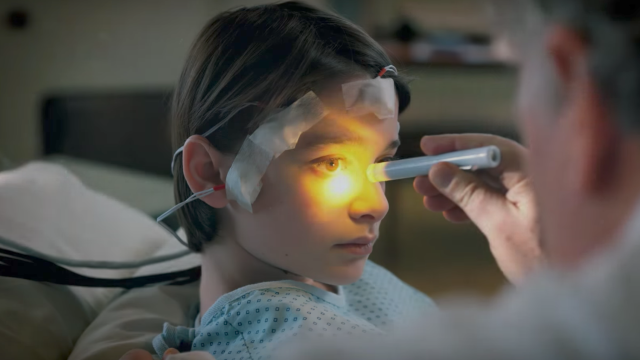Stranger Things returns today, showing what happened to Will Byers one year after returning to his family and friends. Unfortunately for Will, something happened during his time in the Upside Down — he came back wrong. io9 video explores the source of this phenomenon in the latest Tropes In History.
Still: Netflix via YouTube
Coming Back Wrong is what happens when characters are negatively changed, either physically, psychologically, or both, after returning from the Other Side. Usually, this means when they’re brought back from the dead, like Buffy Summers in Buffy the Vampire Slayer or Lady Stoneheart in A Song of Ice and Fire, but other times it can be from a Lovecraftian hell dimension, like in 1997’s Event Horizon. This trope is relatively new. It’s only been around for a couple hundred years, getting more popular over the past several decades. And that’s because science has made us more aware, and terrified, of death.

Image: Raising of Lazarus by Giovanni di Paolo
Before the rise of modern medicine, resurrection stories were largely seen as blessings. The Egyptian god Osiris represented drought and renewal through his death and resurrection, becoming the king of the afterlife. Many of the Greek heroes, like Heracles and Ganymedes, ascended to godlike status after proving themselves to the gods. Then there were the Biblical stories of Jesus Christ and Lazarus. Coming back to life, or any mythical deviation, was a gift.
Following the Renaissance into the Age of Enlightenment, knowledge of the human body increased. Anatomy schools surged in popularity, where researchers dissected cadavers to better understanding the working body. This came with a better comprehension of how death actually affects the body, primarily in the form of decay. Since people were gaining a better understanding of the human body, and how death affects it, it ran the risk of freaking people out if and when things actually went wrong. This is where the famous wrongful burial paranoia comes into the picture.
In 1661, a London butcher named Lawrence Cawthorn died from an illness and, thanks to his greedy landlady wanting to inherit his stuff, was quickly buried. However, at the chapel where he was entombed, people heard shrieks and clawing coming from the place where his coffin rested. Upon opening his tomb and coffin, they discovered he had actually been alive and tried to claw his way out. The same thing happened about a decade later to Madam Blunden. These events were one of many triggers for a paranoia about wrongful burial that lasted for centuries. Lots of people feared waking up in a tomb-like George Washington, who, on his deathbed, ordered his attendants to leave his body out for two days so they’d know it was decaying.
This wasn’t entirely unwarranted, though it was likely exaggerated. Reports go all the way back to the 14th century with philosopher John Duns Scotus, who was allegedly found bloody outside his coffin. It was later connected to cholera outbreaks, where sick people could be carted out along with the dead. Some asserted at least 10-per cent of people were alive when they were buried, which seems unlikely, but English reformer William Tebb more realistically claimed to have found almost 350 cases of live and near-live burial by 1905. Even nowadays, there have been cases of people being buried alive or coming back from the dead. For example, in 2012, a man in Yemen woke up in his grave and turned his funeral into a party.

Advertisement for a safety coffin
In the Victorian era, safety coffins became a hot commodity as a way to solve the “crisis” of wrongful burial. These were coffins equipped with things like safety latches for an easy escape, windows, and tubes so viewers could check on the status of the corpse, or bells and fireworks that could be activated to inform passerby that the person inside was still alive. That said, there isn’t any proof that these coffins actually saved anyone who’d been buried alive — it was more likely that the bell would be accidentally struck by a corpse with rigor mortis.
The widespread panic about being buried alive started showing up in fiction, corrupting the resurrection myth by turning it into something to fear rather than celebrate. There was the German fairy tale The Three Snake Leaves, published by the Brothers Grimm, about a prince who resurrects his princess, only for her to murder him and run away with another man.
There were stories about doctors creating abominations out of body parts, like Mary Shelly’s Frankenstein and H.P. Lovecraft’s Herbert West-Reanimator. Then you had Edgar Allan Poe himself, who published three separate stories about wrongful burial — including The Premature Burial, which claimed: “To be buried alive is, beyond question, the most terrible of these extremes which has ever fallen to the lot of mere mortality.”

The Premature Burial by Antoine Wiertz
Even the story of Lazarus was dissected in the days of modern science. Nineteenth-century author Leonid Andreyev wrote a short story that continued the tale of the Biblical figure past his resurrection, showing how he actually became something evil as a result of coming back from the dead:
Before his death Lazarus had been cheerful and careless, a lover of laughter and harmless jest…Now he was grave and silent; neither he himself jested nor did he laugh at the jests of others; and the words he spoke occasionally were simple, ordinary and necessary words — words as much devoid of sense and depth as are the sounds with which an animal expresses pain and pleasure, thirst and hunger. Such words a man may speak all his life and no one would ever know the sorrows and joys that dwelt within him.
Nowadays, we’ve got stories like Sara Lance being revived in the Lazarus Pit in DC’s Arrow, Jean Grey turning into Dark Phoenix in Marvel’s X-Men, and plenty of other examples of people being corrupted when returning from the other side, including Will Byers.
In fiction, it’s more likely for someone to come back wrong than to come back right. The afterlife leaves a mark now. And it’s all thanks to modern science and paranoia — which trained us to believe that resurrection isn’t a gift, it’s more likely a curse.
